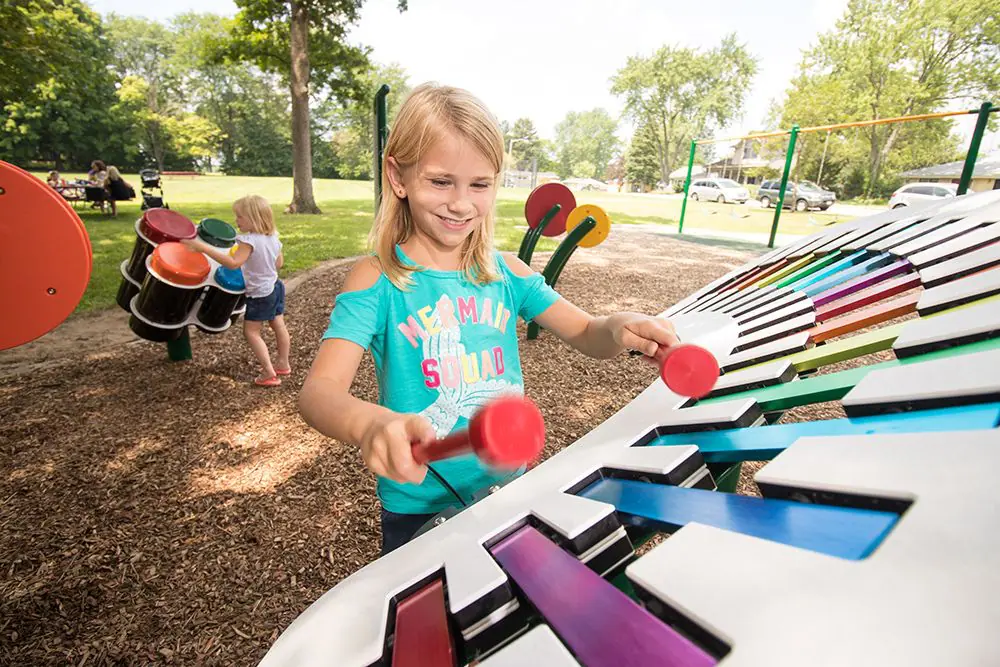STEM Activities for Kids
Posted by May Recreation Content Team on

Once upon a time the school day, like a sentence, was punctuated by class periods. Children's thinking was confined to one area at a time. Learning was compartmentalized. One class period ended, and they put their math books away and opened their readers, and so the day went, with science textbooks following, readers, math workbooks, and perhaps a trip to the gym, And so it went until the dismissal bell put an end to their day of disjointed learning.
As a result, children would continue on to high school with a love of some subjects and a dislike for others. But nowhere in the journey did they see that they could think outside the book. Nor did they see what any of these subjects had to do with pursuing a career.
And then pow! Senior year arrived, and they had to think about colleges, majors, and careers. Fortunately for many of today's high school students, curriculums of old that were heavy on literature and language arts prepared them for liberal arts colleges with only a smattering of math, biology, or maybe chemistry. These curriculums are being replaced by STEM-Integrated courses of study that offer a healthy portion of science, math, and technology.
In other words, subjects that spur students into considering careers as scientists and engineers and perhaps nudge some into futures as innovators and entrepreneurs who change the face of technology.
STEM-Integrated Days
Only lately have STEM subjects made their way into middle schools. But they won't benefit everyone if they remain subjects to be studied rather than areas to be explored. Might not the ideal way be to immerse not only middle school students but also those at the elementary, kindergarten, and even pre-K levels in activities that allow them to learn through exploration and original thinking?
STEM Activities
Like the Whole Language curriculums of the 1970s and 80s that wove language arts into the rest of the primary grade school day, taking a story and incorporating it into hands-on math, science, art, and music projects, children in the age of STEM would be spent in interactive activities that help develop soft skills like problem-solving and critical thinking.
Students would immerse themselves in group projects finding innovative ways to use everyday materials like Legos, rubber bands, and specimens of nature to design gadgets and instruments. And of course, each year would build on and delve a little deeper into concepts explored on a simpler level in previous years. Let's look at an example of how engineering might be introduced in a progressive STEM curriculum.
Delving into Momentum and Gravity
Momentum is an important concept in both engineering and physics. In fact, children who've already spent time on playground swings have already experienced it on a sensory level, so a teacher can use a trip to the play yard as a jumping-off point.
In kindergarten, peer interaction can spur them to explore how putting more effort into leg pumping can increase momentum. In addition, swing play develops coordination and the ability to balance. Although they may not put it into words, children are beginning to see the connection between momentum and gravity.
In the primary grades, projects that build on gravity and momentum might involve dropping objects of various weights like balloons, blocks, and feathers from the same height and comparing how fast each falls. Following up on this, they could weigh each object and record the weights for comparison. It could also be interesting to drop a rubber ball and speculate why it bounces.
By middle school, an engineering project can require children to devise ways to drop eggs that yet prevent them from breaking. Such a project would be conducted in groups speculating on how they can build such a structure that would provide a soft landing and what materials to use.
The teacher's role would be a passive one, circulating through the groups and encouraging reticent students to make suggestions. Everyday materials might be brought in from the children's homes, or the teacher might use classroom funds to purchase them. After putting their ideas into action, language arts would be brought in as students write reports and present them to the class.
STEM for the Future
STEM activities benefit all. They are inclusive and inspire girls to realize technology and science are not male bastions. Children of all abilities feel they are contributing. The most significant advantage of this type of activity is that it encourages brainstorming and makes children more comfortable, innovating, experimenting, and record keeping. They learn to account for errors and devise ways to remedy them.
For more information on creating STEM experiences on your playground, contact May Recreation today!
